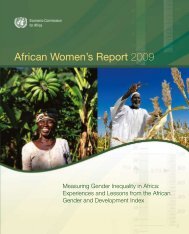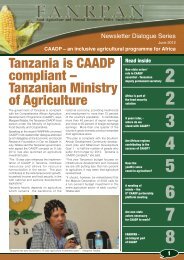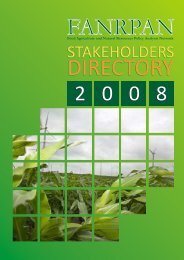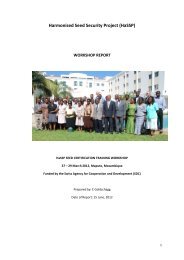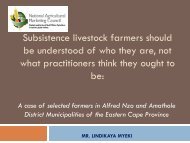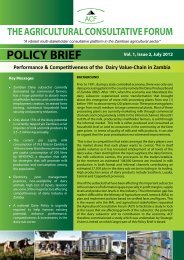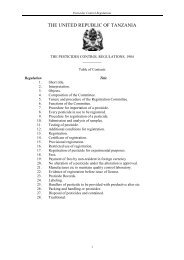Community-driven development decision tools for rural - IFAD
Community-driven development decision tools for rural - IFAD
Community-driven development decision tools for rural - IFAD
- No tags were found...
You also want an ePaper? Increase the reach of your titles
YUMPU automatically turns print PDFs into web optimized ePapers that Google loves.
that survey responses clarify some important points that can help determine what adjustmentsshould be made in project implementation.The survey recorded the views of the ultimate beneficiaries of the public intervention, whichtoo often are reported through project officers and field workers. Having knowledge aboutwhether village assemblies are held regularly to discuss <strong>development</strong> priorities, who participates,who runs the village committees and whether women and the poor feel they have a say in theinstitutions that regulate the community’s investment <strong>decision</strong>s is vital to steer the managementof the project. Analysing responses by the socio-economic stratum of the respondents signals inwhich direction more in-depth surveys should be conducted. If properly done and shielded fromTable 5A method to assess the quality of partnershipsParameters (i.e. questions)Scoring1. Scope <strong>for</strong> concertation (i.e. discussion andconsensus building)2. Membership3. Objectives of the dialogue and values attachedto them4. Dialogue <strong>for</strong> common <strong>decision</strong>s or only <strong>for</strong>in<strong>for</strong>mation and consultation5. Strength of the partners’ commitment0 = no concertation among stakeholders1 = only occasional concertation2 = regular in<strong>for</strong>mal meetings3 = <strong>for</strong>mal partnerships but without specific projects4 = <strong>for</strong>mal partnerships with specific projects andanimation staff0 = there is no partnership1 = partnerships only of public agents2 = public and private partners, but no representationof the poor3 = public and private partners with representatives ofthe poor, but no evolution during past 5 years4 = same as 3, with evolution5 = same as 4, but open to new members, linkageswith outsiders and self-evaluation at least annually0 = there is no dialogue1 = monologue of the dominant partner2 = same as 2, but with potential <strong>for</strong> seekingagreement of junior partners3 = real dialogue with intention to reach consensus onsome issues4 = equity and solidarity seen as common objective ofdialogue, but only partially applied5 = equity and solidarity principles generally applied0 = dialogue serves only to in<strong>for</strong>m/consult the juniorpartners1 = dialogue to arrive at common <strong>decision</strong>s but onlyon some sector or issue2 = dialogue <strong>for</strong> common <strong>decision</strong> on general strategyapproach3 = same as 2 with common <strong>decision</strong>s on main projectideas4 = dialogue <strong>for</strong> common <strong>decision</strong> about implementingsmall projects and procedures5 = regular participatory evaluations of the partnershipper<strong>for</strong>mance0 = there is no explicit commitment1 = the commitment does not specify roles andresponsibilities2 = commitments specify roles and responsibilities, butthere is no control mechanism3 = same as 2 with a control mechanism, but withpoor sense of joint responsibility by all partners4 = same as 3 with a good sense of joint responsibility82




